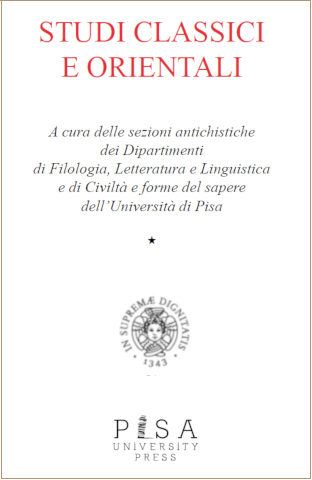LA VILLA DI ERCOLE AD AQUINCUM: LA TERRA SIGILLATA E LE ANFORE
Abstract
This paper is the outcome of an Italian-Hungarian CNR project (2007-2009). Italian and Hungarian teams worked together in order to study the Villa of Hercules, in the archaeological area of Aquincum.This villa has been excavated in 1958-1967 and it resulted to be characterized by various building phases, spanning from the 1st to the 3rd century AD. The villa was built in a part of the Aquincum canabae settlement and it was enlarged and decorated with mosaic floors between the end of the 2nd and the beginning of the 3rd centuryAD.
Most probably the villa was abandoned in the last decades of the 3rd century AD and its area was occupied by a necropolis. Morphologic and archaeometric studies have been conducted on the terra sigillata and amphoras recovered in the villa. The finds have been ascribed to different building phases and various commercial
flows related to them have been reconstructed, flows which in the first imperial age came from the Adriatic area and later from western Mediterranean regions.
From the 3rd century AD onwards amphoras and terra sigillata were imported in a huge quantity fromAegean-Anatolian and Rhine workshops respectively.
[s.menchelli@sta.unipi.it]
Pubblicato
2011-02-07
Fascicolo
Sezione
Articoli


